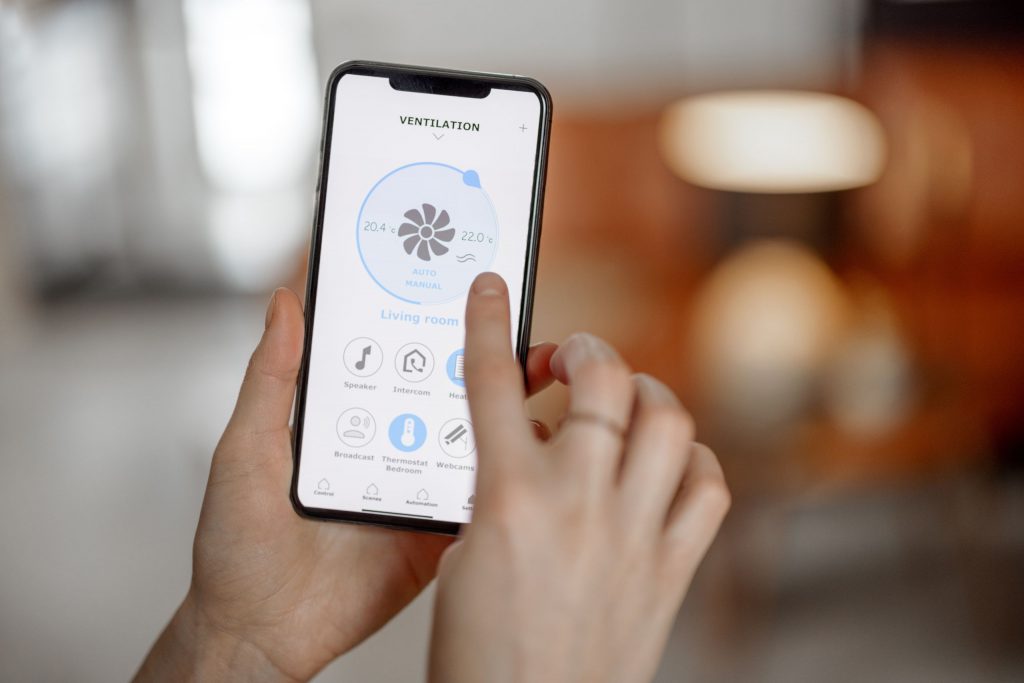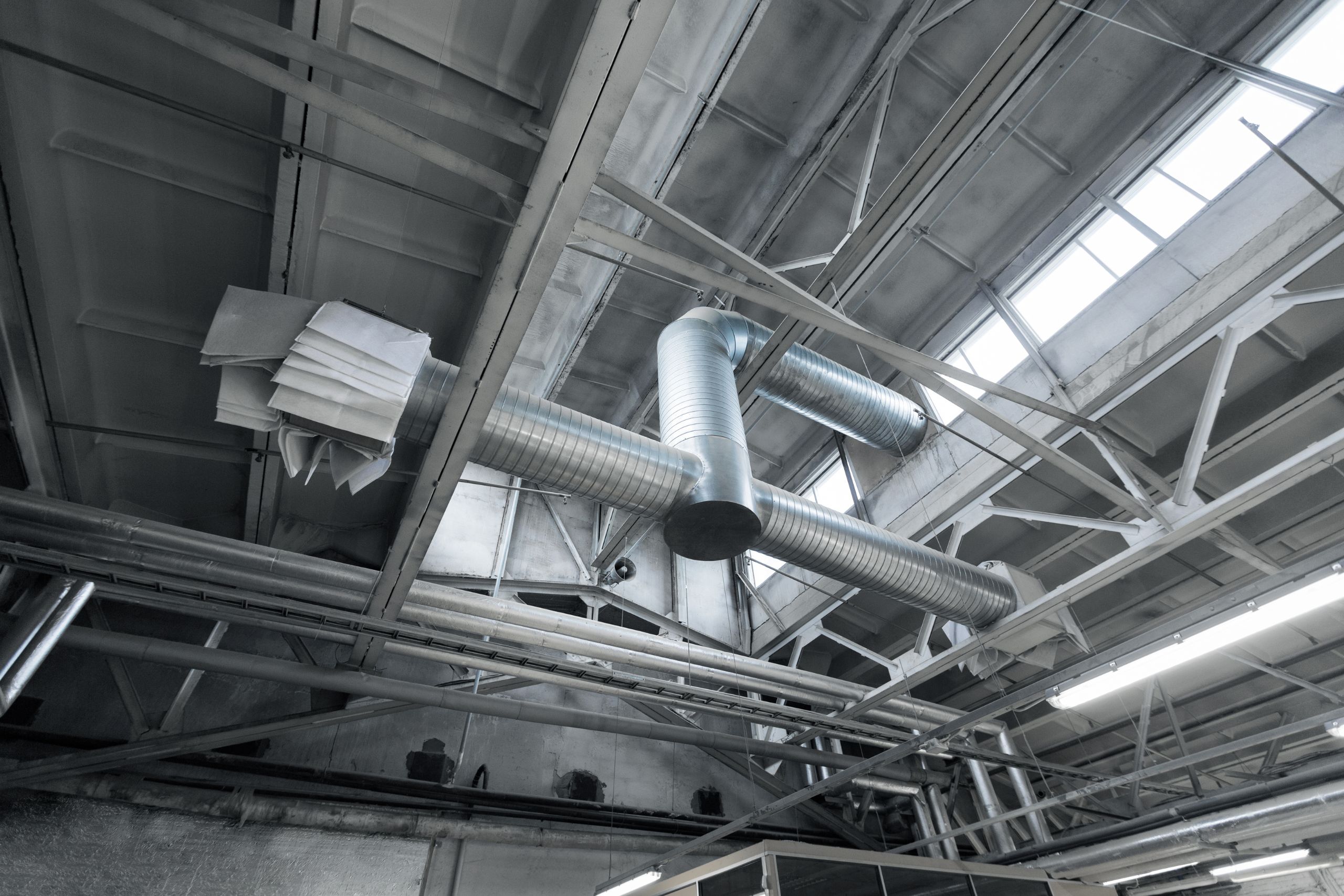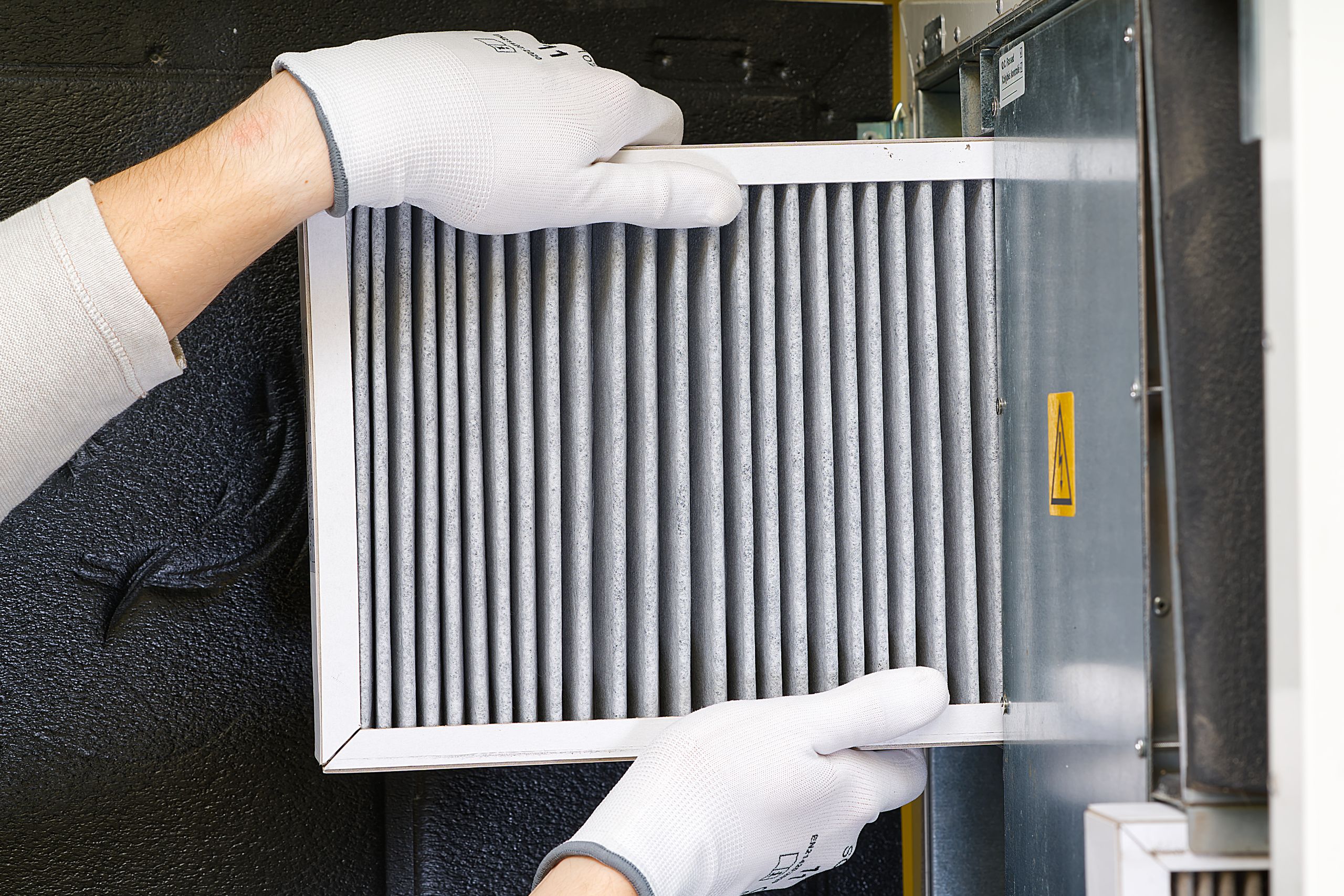En Komplett Guide Till Ventilations- Och Skorstenslösningar För Ett Hälsosammare Hem
Effektiva ventilations- och skorstenssystem spelar en avgörande roll för att upprätthålla energibesparingar och komfort i bostäder och kommersiella utrymmen. Korrekt ventilation säkerställer ett jämnt flöde av frisk luft, vilket är viktigt för luftkvaliteten inomhus och för de boendes allmänna hälsa. När luftcirkulationen är optimerad hjälper den till att reglera temperatur- och luftfuktighetsnivåer, vilket bidrar till en mer bekväm miljö. Dessutom är ett effektivt skorstenssystem avgörande för att på ett säkert sätt driva ut förbränningsbiprodukter, förhindra potentiella faror och samtidigt förbättra värmeeffektiviteten.
Om dessa system försummas kan det leda till ökad energiförbrukning, obekväma levnadsförhållanden och till och med strukturella skador på grund av otillräckligt luftflöde eller överflödig fukt. Husägare och byggherrar bör prioritera utformning och underhåll av ventilations- och skorstenssystem för att optimera energianvändningen och samtidigt säkerställa säkerhet och komfort. Genom att investera i dessa system kan man avsevärt minska energikostnaderna och förbättra den övergripande funktionaliteten i ett utrymme. I den här artikeln kommer läsarna att få insikter i hur viktiga dessa system är och hur de påverkar energibesparingar och komfort.
Ventilation för Olika Årstider
För att upprätthålla optimal luftkvalitet under hela året är det viktigt att justera ventilationssystemen för både sommar och vinter. Under sommaren är det viktigt att förbättra luftflödet för att bekämpa värme och luftfuktighet. Husägare bör öppna fönster under svalare morgnar och kvällar för att låta frisk luft cirkulera, samtidigt som de använder frånluftsfläktar i kök och badrum för att driva ut överflödig fukt och lukt. Att installera en fläkt för hela huset kan också hjälpa till att kyla ner inomhusutrymmet genom att dra in utomhusluft.
På vintern flyttas fokus till att minimera energiförlusten och samtidigt säkerställa korrekt luftväxling. Husägare bör täta eventuella luckor i fönster och dörrar för att hålla kvar värmen, men bör också använda mekaniska ventilationssystem som värmeåtervinningsfläktar (HRV) eller energiåtervinningsfläktar (ERV). Dessa system kan byta ut unken inomhusluft mot frisk utomhusluft samtidigt som de behåller värmen och därmed bibehåller inomhusluftkvaliteten utan att offra värmen.
För ytterligare insikter om hur man förbättrar ventilationssystem som är skräddarsydda för varje säsong, uppmanas läsarna att utforska mer om Hemventilation och luftkvalitet genom informativa bloggar som ägnas åt denna viktiga aspekt av inomhuslivet.

Avancerade Luftreningstekniker
Avancerade luftreningstekniker har visat sig vara viktiga lösningar för att förbättra luftkvaliteten inomhus. HEPA-filter (High-Efficiency Particulate Air) är bland de mest effektiva alternativen och fångar upp till 99,97% av luftburna partiklar, inklusive damm, pollen och husdjursdander. Dessa filter tvingar luften genom tätt packade fibrer, som effektivt fångar upp föroreningar.
UV-ljussystem är ett innovativt komplement till HEPA-tekniken. Med hjälp av ultraviolett ljus kan dessa system inaktivera skadliga mikroorganismer som bakterier, virus och mögelsporer och förhindra att de sprids i inomhusmiljöer. Kombinationen av UV-ljus och HEPA-filter resulterar i en mer omfattande reningsprocess.
Elektrostatiska filter är ett annat avancerat alternativ. De använder en elektrisk laddning för att dra till sig och fånga upp partiklar från luften, vilket förbättrar filtreringseffektiviteten. Dessa filter kan fånga upp mindre partiklar än standardfilter, vilket avsevärt förbättrar inomhusluftens kvalitet.
Tillsammans skapar dessa tekniker ett flerskiktat tillvägagångssätt för luftrening, vilket säkerställer renare och hälsosammare inomhusmiljöer. Genom att använda HEPA-filter, UV-ljussystem och elektrostatiska filter kan man minska hälsoriskerna i samband med dålig luftkvalitet, vilket gynnar både bostäder och kommersiella utrymmen.
Innovativa Skorstenslösningar för Moderna Hem
Under de senaste åren har skorstensinnovationer förändrat landskapet för uppvärmning och ventilation i hemmet, med fokus på effektivitet och hållbarhet. Högeffektiva modeller använder nu avancerad teknik för att maximera värmebehållningen och samtidigt minimera utsläppen. Dessa konstruktioner har ofta isolerade rökkanaler och avancerade dragsystem som förbättrar luftcirkulationen och minskar risken för nedåtgående drag.
Miljövänliga skorstensalternativ har också dykt upp, med material från hållbara resurser och byggda för att uppfylla stränga miljöbestämmelser. Många av dessa konstruktioner har funktioner som inbyggda luftfiltreringssystem, som hjälper till att upprätthålla luftkvaliteten inomhus. Sådana framsteg bidrar inte bara till en renare miljö utan förbättrar också den totala effektiviteten hos hemvärmesystem.
Husägare uppmuntras att utforska specialiserade bloggar med fokus på Skorstenar Och Specialprodukter för djupgående information om dessa innovationer. Dessa bloggar ger insikter i de senaste trenderna, installationsriktlinjer och underhållstips, vilket hjälper husägare att fatta välgrundade beslut om att förbättra sina skorstenssystem. Att investera i dessa innovativa lösningar kan leda till lägre energikostnader och ett minskat koldioxidavtryck, vilket gör dem till ett utmärkt val för ett modernt boende.

Energieffektiva Ventilationssystem
Energieffektiva ventilationssystem är utformade för att minimera energiförbrukningen och samtidigt säkerställa en god luftkvalitet inomhus. Dessa system inkluderar ventilationssystem med värmeåtervinning (HRV), som fångar upp värme från utgående gammal luft och överför den till inkommande frisk luft. Denna process minskar behovet av ytterligare uppvärmning och sänker därmed energianvändningen.
Andra system, t.ex. ventilatorer med energiåtervinning (ERV), har en liknande funktion men hanterar även luftfuktigheten, vilket gör dem lämpliga för olika klimat. Mekaniska ventilationssystem utrustade med fläktar med variabel hastighet kan justera luftflödet baserat på beläggning och luftkvalitet, vilket ytterligare optimerar energianvändningen.
Dessutom kan avancerade filter i dessa ventilationssystem fånga upp luftburna föroreningar, vilket bidrar till hälsosammare inomhusmiljöer utan att kompromissa med energieffektiviteten.
För den som är intresserad av ventilationssystem och deras potentiella fördelar kan det ge värdefulla insikter att utforska bloggar med fokus på Ventilationssystem och filter. Genom att förstå dessa system kan man fatta välgrundade beslut om energianvändning och samtidigt upprätthålla komfort och luftkvalitet i inomhusutrymmen.
Smart Ventilation: Automatisering och Kontroll
Smart hemintegration för ventilationssystem förbättrar luftkvaliteten inomhus genom att göra det möjligt för användare att övervaka och styra sina miljöer på distans. Dessa avancerade system använder IoT-teknik för att tillhandahålla realtidsdata om luftkvalitetsmätningar, t.ex. luftfuktighet, temperatur och partikelnivåer.
Husägare kan justera ventilationsinställningarna via en smartphone-app eller ett webbgränssnitt, vilket gör att de kan optimera luftflödet utifrån rådande förhållanden. Automatiseringsfunktioner kan programmeras för att aktivera ventilationen under perioder med hög luftförorening eller när utomhusluftens kvalitet förbättras, vilket säkerställer en kontinuerligt hälsosam bostadsmiljö.
Genom att integrera smart ventilation med andra smarta hem-enheter, t.ex. luftrenare och HVAC-system, skapas en synkroniserad miljö som maximerar effektivitet och komfort. Användarna får varningar och meddelanden om förändringar i luftkvaliteten eller systemets prestanda, vilket ger sinnesfrid och större kontroll.
Resultatet är ett strömlinjeformat system som är utformat för att förbättra både hälsan och energieffektiviteten, vilket gör inomhusutrymmen mer bekväma samtidigt som energislöseriet minimeras. I takt med att tekniken för smarta hem fortsätter att utvecklas utgör smarta ventilationssystem ett betydande framsteg när det gäller luftkvalitetshantering i bostäder.

Anpassning till Sveriges Klimat: Bästa Praxis för Underhåll av Ventilation och Skorstenar
Att underhålla ventilations- och skorstenssystem i Sveriges speciella klimat kräver särskilda strategier. På vintern kan de kalla temperaturerna orsaka kondens i ventilationskanalerna. För att förhindra detta bör du se till att alla kanaler är ordentligt isolerade. Detta bidrar också till att minska värmeförlusterna i hemmet. Regelbundna inspektioner är viktiga; kontrollera om det finns blockeringar och se till att luftflödet är optimalt.
Under de fuktiga sommarmånaderna kan fukt ansamlas i skorstenar och ventilationssystem, vilket kan leda till mögeltillväxt. Husägare bör regelbundet rengöra sina skorstenar för att förhindra uppbyggnad av sot och kreosot, vilket blir mer problematiskt med luftfuktighet. Installation av ett skorstenslock kan skydda mot regn och fuktinträngning.
Dessutom är det lämpligt att överväga installation av fuktkontroller i ventilationssystemet. Dessa system kan justera luftflödet baserat på luftfuktigheten inomhus, vilket främjar en balanserad miljö året runt.
Slutligen är det viktigt att schemalägga professionella inspektioner varje år för att identifiera och åtgärda eventuella problem. Detta proaktiva tillvägagångssätt förbättrar inte bara ventilations- och skorstenssystemens effektivitet utan förlänger också deras livslängd, vilket garanterar säkerhet och komfort under alla årstider.

Slutsats
För att förbättra hemmets komfort och effektivitet är det viktigt att välja lämpliga ventilations- och skorstensprodukter som är skräddarsydda för specifika behov. Korrekta ventilationssystem, t.ex. frånluftsfläktar, köksfläktar och balanserade luftsystem, är viktiga för att upprätthålla luftkvaliteten inomhus och reglera temperaturen, samtidigt som fuktansamlingar och föroreningar minimeras. Att välja skorstenslösningar som säkerställer effektiv rök- och gasutdrivning är avgörande för säkerhet och energieffektivitet. Genom att använda energieffektiva modeller kan man dessutom avsevärt minska kostnaderna och miljöpåverkan. Regelbundet underhåll av dessa system säkerställer dessutom optimal prestanda och lång livslängd. Genom att förstå och genomföra dessa val kan husägare skapa en bekvämare, hälsosammare och mer energieffektiv boendemiljö.






